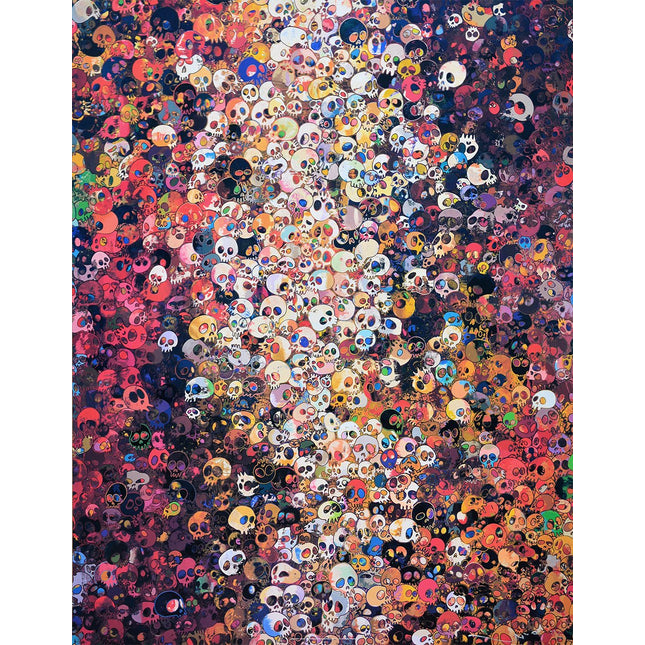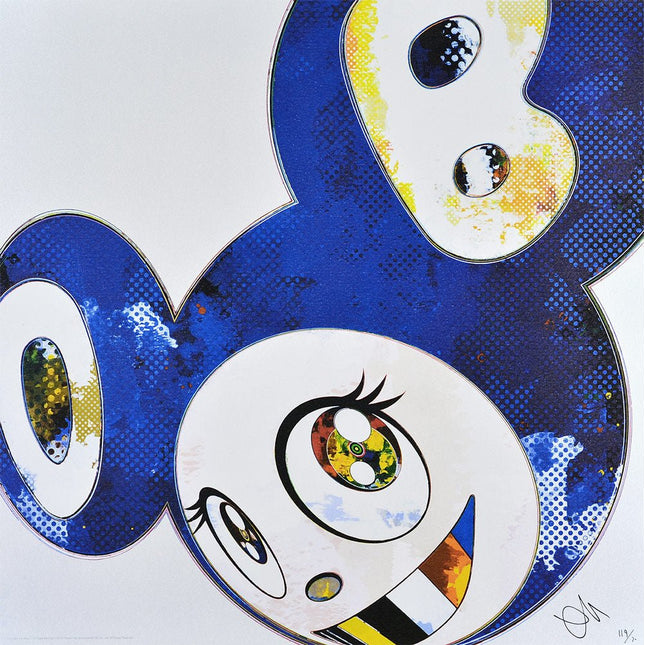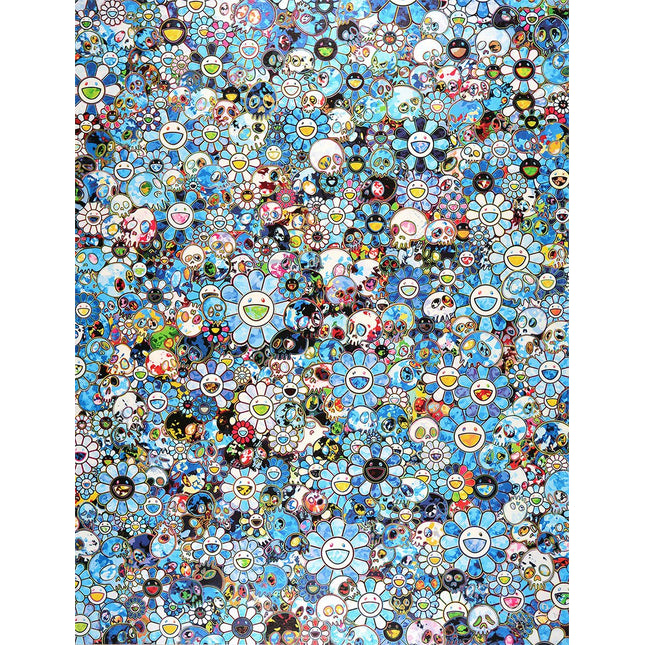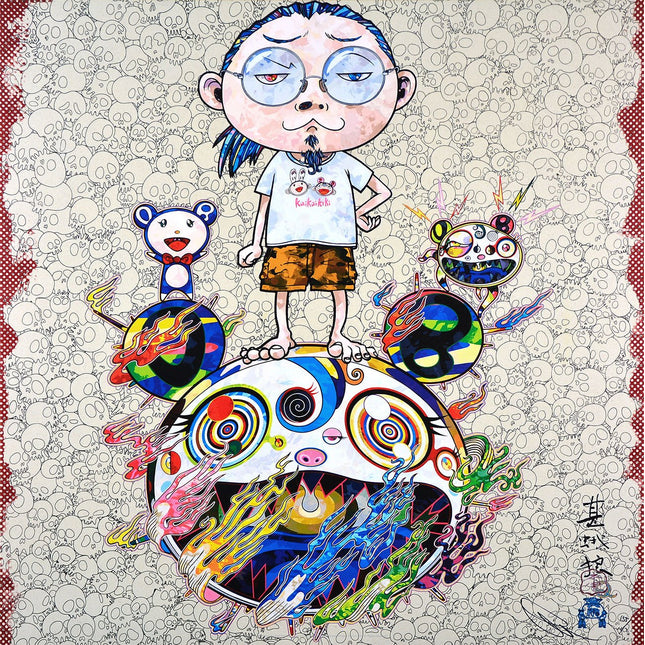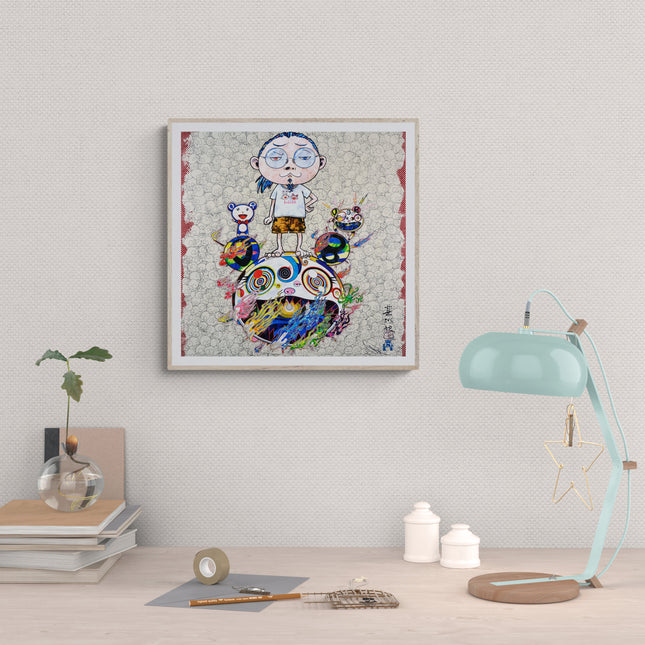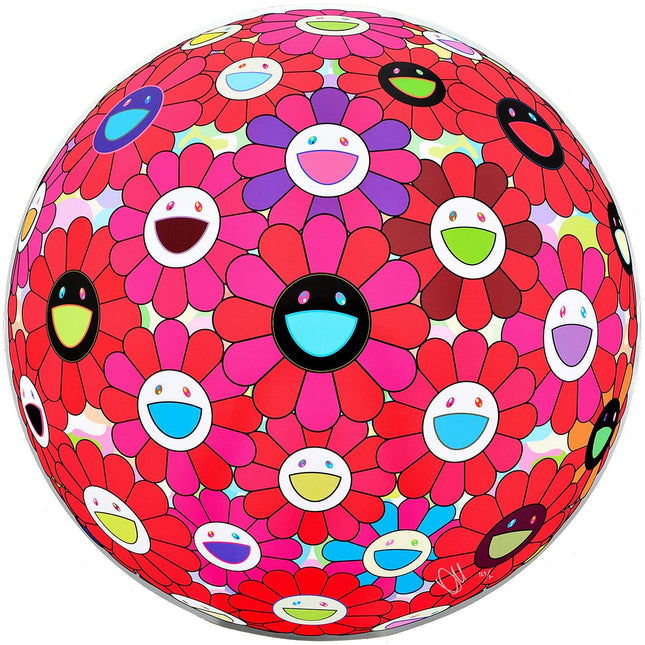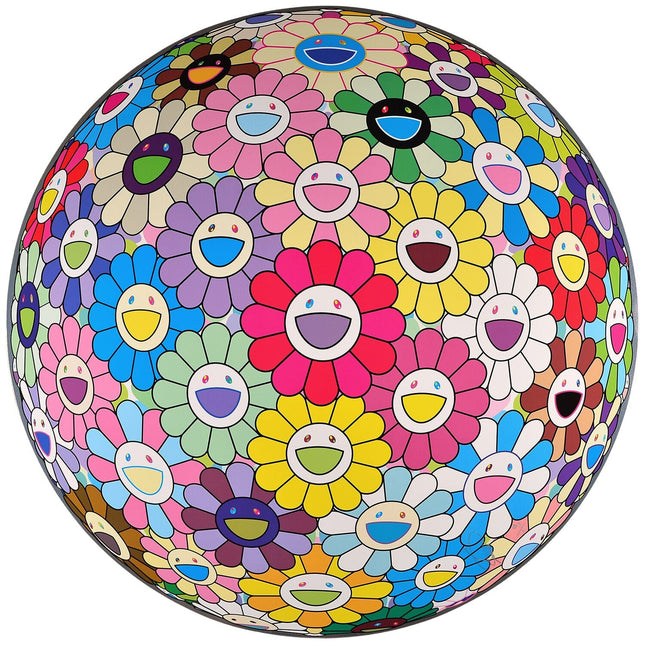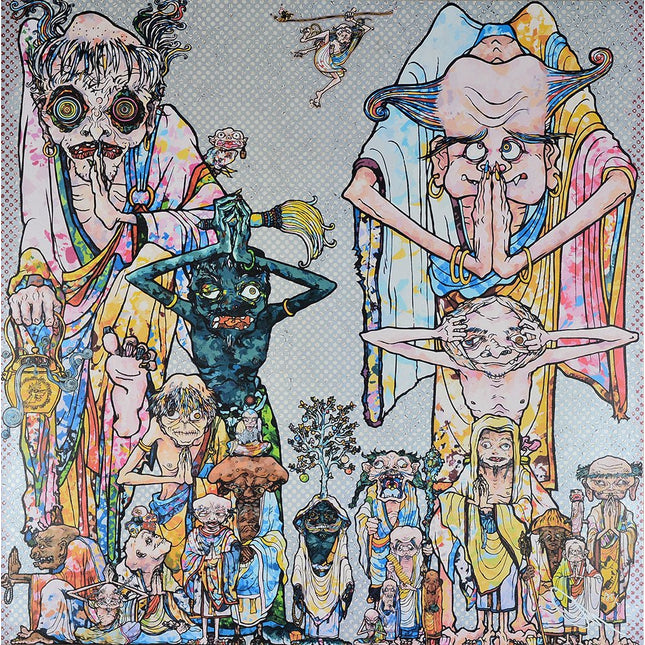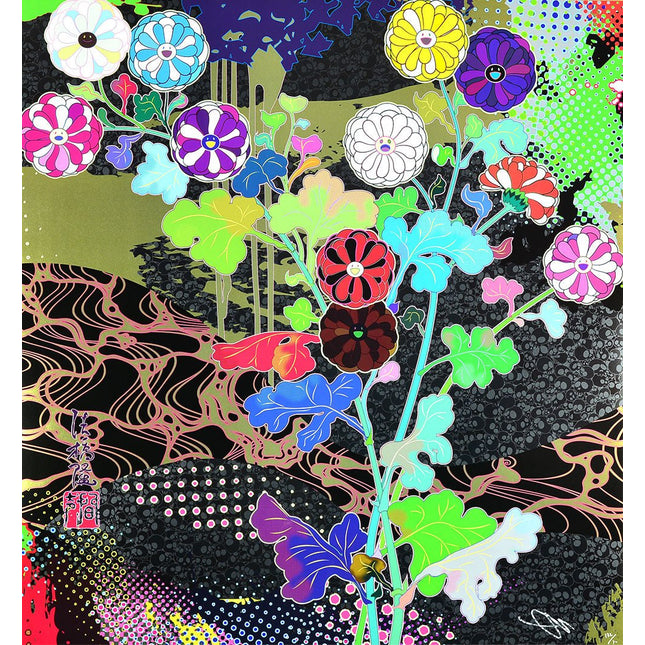Offset lithograph with cold stamp and screen print with UV gloss varnish on paper hand signed and numbered by Takashi Murakami. Limited edition of 300 published by Kaikai Kiki Co.
A Return from Wandering by Takashi Murakami is a work that retains the vibrant and ornamental essence characteristic of his art but introduces a crucial variation: a black background composed of skulls in the same tone. This aesthetic choice creates a striking contrast with the brightly colored flowers, emphasizing their energy and dynamism within a dark, symbolically charged space.
Skulls have been a recurring motif in Murakami’s artistic production, serving as a reminder of impermanence, death, and the transience of existence. Drawing inspiration from both pop culture and Buddhist tradition, Murakami uses these images to evoke the fragility of life—but with a less somber approach than in Western iconography. Instead of depicting death as an absolute end, Murakami incorporates it into his aesthetic universe as part of a cycle of renewal and transformation.
This concept has deep roots in Japanese visual culture, where skulls have been used in painting and ukiyo-e prints to illustrate both the fleeting nature of power and the inevitable fate of human beings. A prime example is the work of Utagawa Kuniyoshi, who depicted ghosts and skeletons in his woodblock prints with a balance between the macabre and the decorative. Murakami modernizes this approach, blending it with the Superflat aesthetic, where images lack depth and layers of meaning are compressed into a single plane.
In A Return from Wandering, the interplay between the black skulls and the vibrant flowers creates a visual and conceptual tension. On one hand, the skulls form an almost imperceptible pattern at first glance—a silent presence lurking beneath the explosion of color from the flowers. On the other hand, the dark background intensifies the brightness of Murakami’s color palette, making the visual impact even stronger.
This contrast can be interpreted as a representation of the coexistence of vitality and mortality, a theme that resonates with the Buddhist philosophy of mujō (無常)—the idea that all things are transient. Through this work, Murakami not only celebrates life with his signature burst of color but also reminds us of the constant presence of death, hidden in the shadows.
As in many of his pieces, Murakami pays homage to Japanese art history by reinterpreting its iconography through a contemporary lens. The repetition of skulls in the background echoes the meticulous decorative patterns of the Rinpa school, while the flowers reference the pictorial traditions of the Edo period. However, by incorporating a more graphic, stylized approach and drawing from mass culture references, he transforms these classical motifs into a visual language that speaks to the present.
A Return from Wandering is a work in which Murakami plays with opposites: light and darkness, life and death, tradition and modernity. The use of a black background with skulls adds a layer of symbolic depth to his characteristic floral universe, making this piece a meditation on impermanence and the duality of existence. Through this combination of elements, Murakami not only reaffirms his connection to traditional Japanese iconography but also recontextualizes it for a global audience, creating a work that resonates both aesthetically and philosophically.







